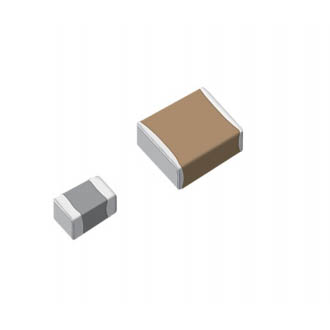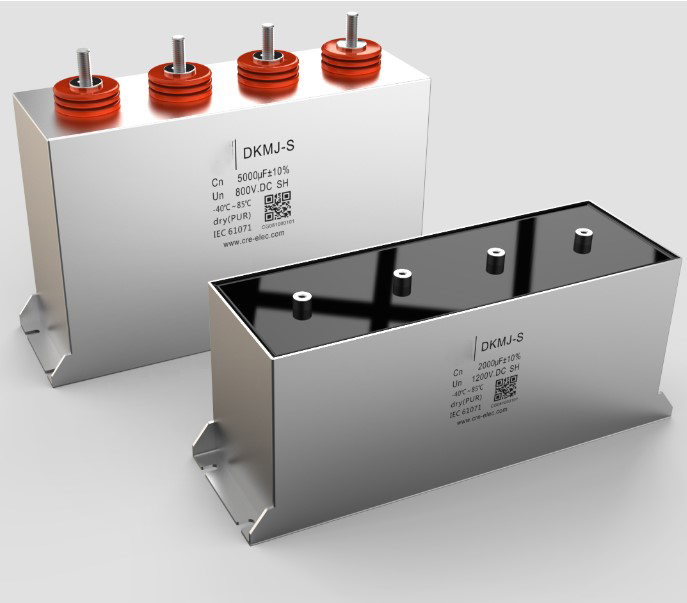Radial Lead Type Miniature Aluminum Electrolytic Capacitor KCG
Main technical parameters
| Items | characteristics | |||
| Working temperature range | -40~+105℃ | |||
| nominal voltage range | 400V | |||
| capacitance tolerance | ±20% (25±2℃ 120Hz) | |||
| leakage current (uA) | 400WV |≤0.015CV+10(uA) C:Norminal Capacity(uF) V:Rated Voltage(V) ,2-minute reading | |||
| tangent of the loss angle at 25 ± 2 ° C 120 Hz | Rated Voltage (V) | 400 | ||
| tg δ | 0.15 | |||
| If the nominal capacity exceeds 1000uF, the loss tangent increases by 0.02 for every 1000UF increase | ||||
| Temperature characteristics (120 Hz) | Rated Voltage(V) | 400 | ||
| Impedance ratio Z(-40℃)/Z(20℃) | 7 | |||
| Durability | In a 105 ° C oven, after applying the rated voltage with rated ripple current for a specified period of time, the capacitor shall be tested at room temperature of 25 ± 2 ° C for 16 hours. The performance of the capacitor shall meet the following requirements | |||
| Capacity Change Rate | Within ± 20% of the initial value | |||
| loss angle tangent | Below 200% of the specified value | |||
| leakage current | Below the specified value | |||
| load life | ≥Φ8 | 115℃2000 Hours | 105℃4000 Hours | |
| High temperature storage | The capacitor shall be stored for 1000 hours at 105 ° C and placed at normal temperature for 16 hours. The test temperature is 25 ± 2 ° c. the performance of the capacitor shall meet the following requirements | |||
| Capacity Change Rate | Within ± 20% of the initial value | |||
| loss angle tangent | Below 200% of the specified value | |||
| leakage current | Below 200% of the specified value | |||
Product Dimensional Drawing
Ripple current frequency correction coefficient
| Frequency (Hz) | 50 | 120 | 1K | 10K-50K | 100K |
| Coefficient | 0.4 | 0.5 | 0.8 | 0.9 | 1 |
The Liquid Small Business Unit has been engaged in R&D and manufacturing since 2001. With an experienced R&D and manufacturing team, it has continuously and steadily produced a variety of high-quality miniaturized aluminium electrolytic capacitor to meet customers’ innovative needs for electrolytic aluminum capacitors. The liquid small business unit has two packages: liquid SMD aluminum electrolytic capacitors and liquid lead type aluminium electrolytic capacitors. Its products have the advantages of miniaturization, high stability, high capacity, high voltage, high temperature resistance, low impedance, high ripple, and long life. Widely used in new energy automotive electronics, high-power power supply, intelligent lighting, gallium nitride fast charging, home appliances, photo voltaics and other industries.
All about Aluminum Electrolytic Capacitor you need know
Aluminum electrolytic capacitors are a common type of capacitor used in electronic devices. Learn the basics of how they work and their applications in this guide. Are you curious about aluminium electrolytic capacitor? This article covers the fundamentals of these aluminum capacitor, including their construction and usage. If you’re new to aluminium electrolytic capacitors, this guide is a great place to start. Discover the basics of these aluminum capacitors and how they function in electronic circuits. If you’re interested in electronics capacitor component , you may have heard of aluminium capacitor. These capacitor components are widely used in electronic devices and play an important role in circuit design. But what exactly are they and how do they work? In this guide, we’ll explore the basics of aluminum electrolytic capacitors, including their construction and applications. Whether you’re a beginner or an experienced electronics enthusiast, this article is a great resource for understanding these important components.
1.What is an aluminum electrolytic capacitor? An aluminium electrolytic capacitor is a type of capacitor that uses an electrolyte to achieve a higher capacitance than other types of capacitors. It is made up of two aluminum foils separated by a paper soaked in electrolyte.
2.How does it work? When a voltage is applied to the electronic capacitor, the electrolyte conducts electricity and allows the capacitor electronic to store energy. The aluminum foils act as the electrodes, and the paper soaked in electrolyte acts as the dielectric.
3.What are the advantages of using an aluminum electrolytic capacitors? Aluminium electrolytic capacitors have a high capacitance, which means they can store a lot of energy in a small space. They are also relatively inexpensive and can handle high voltages.
4.What are the disadvantages of using an aluminum electrolytic capacitor? One disadvantage of using an aluminum electrolytic capacitors is that they have a limited lifespan. The electrolyte can dry out over time, which can cause the capacitor components to fail. They are also sensitive to temperature and can be damaged if exposed to high temperatures.
5.What are some common applications of aluminium electrolytic capacitors? Aluminium electrolytic capacitor are commonly used in power supplies, audio equipment, and other electronic devices that require high capacitance. They are also used in automotive applications, such as in the ignition system.
6.How do you choose the right aluminum electrolytic capacitor for your application? When choosing an aluminum electrolytic capacitors, you need to consider the capacitance, voltage rating, and temperature rating. You also need to consider the size and shape of the capacitor, as well as the mounting options.
7.How do you care for an aluminium electrolytic capacitor? To care for an aluminium electrolytic capacitors, you should avoid exposing it to high temperatures and high voltages. You should also avoid subjecting it to mechanical stress or vibration. If the capacitor is used infrequently, you should periodically apply a voltage to it to keep the electrolyte from drying out.
The Advantages and Disadvantages of Aluminum Electrolytic Capacitors
Aluminum electrolytic capacitor have both advantages and disadvantages. On the positive side, they have a high capacitance-to-volume ratio, making them useful in applications where space is limited. The aluminium Electrolytic Capacitor also have a relatively low cost compared to other types of capacitors. However, they have a limited lifespan and can be sensitive to temperature and voltage fluctuations. Additionally, Aluminium Electrolytic Capacitors may experience leakage or failure if not used properly. On the positive side, Aluminum Electrolytic Capacitors have a high capacitance-to-volume ratio, making them useful in applications where space is limited. However, they have a limited lifespan and can be sensitive to temperature and voltage fluctuations. Additionally, Aluminum Electrolytic Capacitor can be prone to leakage and have a higher equivalent series resistance compared to other types of electronic capacitors.






